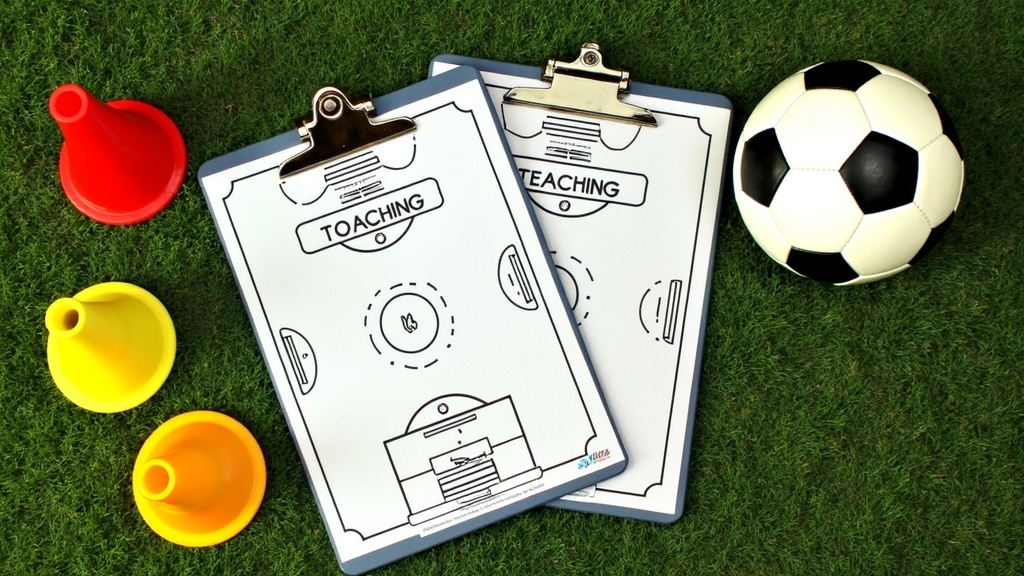 Coaching youth soccer is pretty rewarding, but it also comes with real challenges—not least of which is inspiring young players to learn, enjoy the game, and keep developing. Whether you’re managing a new Under-8 squad or helping teenagers get ready for competitive tournaments, having the right resources can make those training sessions way smoother and a lot more fun for everyone.
Coaching youth soccer is pretty rewarding, but it also comes with real challenges—not least of which is inspiring young players to learn, enjoy the game, and keep developing. Whether you’re managing a new Under-8 squad or helping teenagers get ready for competitive tournaments, having the right resources can make those training sessions way smoother and a lot more fun for everyone.
If you’re a coach looking to up your game or just want new ideas to bring to the field, the right book can go a long way. I’ve spent years trying out drills from different authors, reading about soccer philosophies, and getting a feel for which books actually deliver practical tips versus ones that get bogged down in theory. A really good youth soccer coaching book should offer clear advice, age-appropriate activities, and strategies you can put to use right away—no need for a pro license to understand it.
This guide features what I think are the best youth soccer coaching books in 2025, along with tips on how to pick one that fits your needs. I’ll also share why the right resource matters, and point to some cool extras like online video libraries and downloadable drills, if you want to go beyond the basics. My hope is that you find something here to help your players grow and keep loving the game, no matter their age or experience.
Why Invest in a Great Youth Soccer Coaching Book?
There’s a massive difference between winging it from your own playing days and having access to a structured, expert source designed for youth coaching. Good coaching books show you more than just drills; they offer insight into keeping kids motivated, communicating with young players, and managing teams with different personalities and skill levels.
I’ve found these books handy for:
- Grabbing new training session ideas when my creativity hits a wall.
- Switching up the routine and adding small-sided games or fun challenges that keep young players eager to show up.
- Building confidence, both for myself as a coach and for the kids on my team, by following proven step-by-step plans.
If you’ve tried Googling drills at the last minute before practice, or felt stuck when a session just isn’t clicking, a well-organized coaching book is pretty much a lifesaver. It’s especially true when you run into situations you haven’t handled before, like getting quiet kids to speak up or managing high energy with structure.
What to Look for in a Youth Soccer Coaching Book
Not all soccer books are made equal, and some are definitely better for younger or less experienced players, while others cater to more advanced youth teams. Here’s what I check for when picking out a new book:
- Clear explanations and diagrams. Kids need visual cues and easy-to-follow instructions, and coaches do too. Diagrams or photos are a must.
- Age-appropriate drills. A good book will have separate sections for younger kids (U6, U8) and pre-teens or teens. Activities should match attention spans and skill levels.
- Practical coaching advice. It’s way better if the author actually coaches at the youth level or works with clubs; real world tips make a big difference.
- Progressive session plans. Sessions that build skills step-by-step help keep everyone learning without frustration and let you measure progress easily.
- Help with soft skills. Handling parents, building team culture, and making sure everyone has fun are just as important as technique. Look for books that touch on these often overlooked essentials.
I often flip through the table of contents before committing to a new book. If it only lists drills, it might help some, but the best books give context—how to use those drills, adapt them, and grow your players while having fun. Also, I prefer books that mention how to step up team morale or ways to handle common behavioral challenges, because those issues pop up all the time on a youth team.
Top Youth Soccer Coaching Books to Check Out in 2025
So, here’s the part you’ve been waiting for: my top picks for youth soccer coaching books for this year. These are all written by people who know coaching isn’t just about running laps. They come packed with proven advice and plenty of drills you can use right away, no matter your experience level.
1. “Soccer Smarts for Kids: 60 Skills, Strategies, & Secrets” by Andrew Latham
This book is super useful for coaches working with beginners and younger kids. It teaches soccer fundamentals, builds confidence, and blends skill work with fun. The step-by-step guides and illustrations make it simple for anyone to pick up. If you’re coaching your own child for the first time or volunteering for your local club, you’ll appreciate its clear layout and approachable tone.
2. “Coaching Youth Soccer: The Guide for Coaches and Parents” by Dr. Alan Goldberg & Dr. Rich Ginsburg
This one’s a solid all-in-one resource, especially for new coaches. It combines technical advice with lots of info on helping kids handle nerves, enjoy competition, and build good habits. There’s a big focus on communicating with both players and their families, which makes the whole team experience smoother for everyone. It also talks about resolving conflicts and encouraging kids to respect one another, which is so important in youth sports.
3. “The Soccer Coaching Bible” by National Soccer Coaches Association of America (NSCAA)
If you want something more advanced, this bible covers everything: tactical advice, age-focused training plans, and real-life stories from top coaches. The section on youth drills is broad and updated for today’s style of play, so you’re not stuck with drills from the ‘80s. Coaches at any level can pull ideas from here to suit their team’s needs.
4. “365 Soccer Drills and Activities” by Michael A. Dawson
Sometimes you just need a bunch of fresh drills to keep things exciting. This book packs in a full year’s worth of games and technical activities, including minigames, agility work, and group exercises. Everything’s clearly explained, and you can flip to the age group you need without reading the whole thing. It’s my go-to when I need to shake things up at practice or add in a quick competitive challenge.
5. “Coaching the Tiki Taka Style of Play” by Jed Davies
If you’re interested in skill-focused, possession play (think Barcelona or Spain), this guide helps coaches break down those concepts for youth players. With session examples, smallsided games, and clear graphics, it’s surprisingly accessible to coaches of all levels. I’ve found it’s a fun way to teach kids about teamwork, movement, and creative decision-making.
SoccerTutor’s Library
This isn’t a traditional book, but the SoccerTutor platform offers a huge collection of downloadable books and videos, covering everything from passing drills to complete session plans for all ages. It’s worth checking out at SoccerTutor.com, especially if you like to mix books with online resources. The video breakdowns make visualizing exercises easy, and there’s always something new to try if you want to add more variety to your training.
How to Use These Books: Tips from My Experience
It’s easy to buy a book and let it gather dust, so here’s how I’ve gotten the most out of my coaching library over the seasons:
- Start with one or two drills per session. There’s no need to overhaul your whole practice plan; just try out a couple of new ideas each week and see how the players respond. Even adding a single fresh activity can shake up your routine and reveal new strengths among your players.
- Read ahead, not just the night before a session. Planning a few weeks at a time gives you more freedom to adapt if things go sideways (which happens a lot with kids). It also helps you make sure all players get attention, rather than just focusing on the stars or high-scorers.
- Combine book knowledge with feedback from your team. What works on paper doesn’t always work in the mud, so be ready to tweak drills or rules to match your players’ energy and mood. Sometimes the simplest games lead to the most improvement, especially when kids are having fun and building friendships along the way.
Occasionally, I ask players which games they enjoyed most or what they’d like to practice again. Their answers can guide your next sessions and help keep the whole team motivated and excited to come back.
Extra Resources to Level Up Your Coaching
If you want even more support, there are some other resources that are pretty handy alongside coaching books:
- Online drill libraries. Sites like SoccerTutor.com offer videos to show you exactly how activities should look, which helps if you’re new or need to show your players. The visual cues are especially useful for trickier skills like turns, passing combos, or goalie drills.
- YouTube channels run by youth coaches. Sometimes a quick video makes more sense than a diagram, so it’s worth checking if you’re teaching something new. You can even show short clips to your players before or during practice for a burst of motivation.
- Coaching forums and groups. Facebook groups or coaching subreddits are super helpful when you need encouragement or creative fixes for common problems. You’ll get quick answers to questions and the support of a worldwide community that’s faced similar challenges.
These resources can also help you keep your own coaching fresh, reminding you to mix things up and keep learning. No matter how long you coach, there’s always a new trick, game, or perspective to stumble upon and put into action.
Final Thoughts
Having the right youth soccer coaching book can save you hours of prep and make practices way more enjoyable for everyone. Whether you want drill ideas, age-specific training plans, or advice for building strong team culture, there are options here that fit every coaching style. The books and resources I’ve used the most are the ones that grow with you, offering new tips as your team gets older and more skilled. If you want to browse even more options or check out interactive resources, I’d definitely recommend a look at SoccerTutor.com for the latest drills and downloadable material. Wrapping up, just remember: the best coaching happens when you keep learning, stay flexible, and always look for ways to bring extra positivity to the field. The right mix of books, feedback, and real-world experience will help both you and your players have a great adventure with every season.
